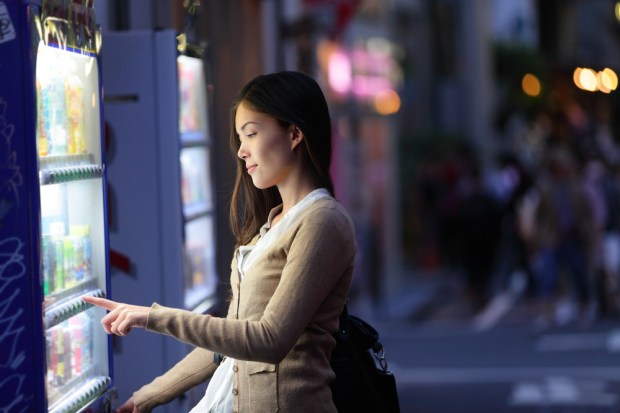For Unattended Retail, Sea Change And Convergence

The march toward unattended retail, and connected locations that tell companies what consumers want, how they’re buying and how much, is gaining speed every day. Technology helps, sure, but so does consumer awareness and willingness to pay with something other than cash. USA Technologies SVP Maeve Duska tells PYMNTS’ Karen Webster about the trends that are converging to make unattended retail an ever more ubiquitous part of consumers’ daily lives.
No longer the purview of laundromats, candy machines or newspaper kiosks, unattended retail is reaching into new verticals, with the help of changing consumer attitudes and, of course, cashless payments.
In an interview with PYMNTS’ Karen Webster, USA Technologies SVP Maeve Duska — the first of a series detailing the different verticals that are at the forefront of the unattended retail experience — explained why now may just be the time for unattended retail to explode.
“It’s an exciting space to think about,” said Duska, noting that “not long ago, it was vending that was the original unattended retail market” and one that stood in contrast to the in-store retail experience. “Flash forward to today,” she said, “where consumers want to have a one-on-one relationship [with the retailer] but don’t necessarily want to interact with another person … I think a lot of it has to do with the ubiquity of smartphones. More people are comfortable with interacting with touchscreens, and online shopping has helped.”
In the world of retail, unattended and high-end consumer experiences are converging, said Duska, as the lines become somewhat blurred between the traditional retail and unattended retail experiences. “The in-store retailers are reaching toward unattended options, and the unattended retailers, such as those defined with, say, kiosks, are moving toward more high-end store experiences.”
Agreeing with Webster’s contention that adoption of payments cards has also cleared the way for an increased embrace of the unattended retail experience, Duska said that mobile payments also are helping change the way that consumers interact with big brands. She singled out the Starbucks experience, where people can order coffee online, arrive at the store (where their order will be waiting), pay for that order and leave. This minimizes the traditional retail experience of giving a verbal order, waiting in line and paying at the register. That quick “in-and-out experience,” as she termed it, extends to airports (where Starbucks has self-serve locations).
“Encouraging results come from the unattended retail experience,” said Duska. “Check averages have been higher, and over the past five years, more and more people are walking around without cash and becoming comfortable with mobile and cashless payment options. To meet consumer payment preferences, retailers really need to be prepared to accept cashless payments.”
But as with any transition, challenges await. Retailers, said Duska, must be highly focused on the value of locations they choose in setting up unattended retail venues. It is critical, she said, to make consumers aware of the locations right away and then to “pull them in” to complete a transaction. Proper software must be in place to monitor inventory, track what is selling, what is not selling and what needs to be replaced at any given location.
For unattended retail, the sea change may be a sudden one, mused Duska. She likened the sudden emergence, and acceptance, of dollar bill validators as an example of how technology and behavioral changes can dovetail. And now, she said, mobile payments, stretching across Apple Pay, Samsung Pay and Android Pay, are making it easier for users to interact with the unattended retail experience. Particularly in the case of Apple Pay, she noted, there is a 12 percent boost in average ticket spending, indicating growing comfort with using cashless payments and fostering another evolution (or revolution): unattended retail as the “on-ramp to mobile payments adoption.”
